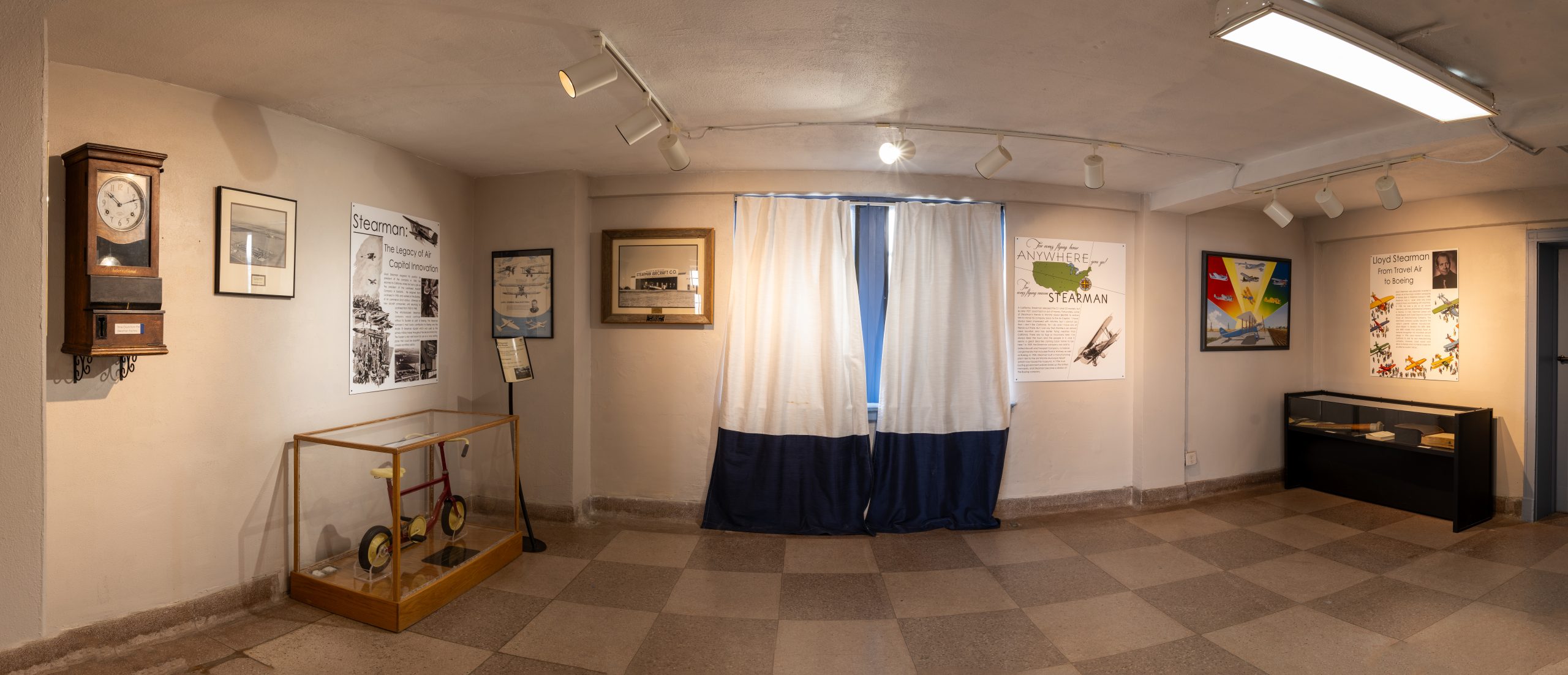
Lloyd Stearman was personally involved in almost all of the major aviation companies in Kansas. Born in Wellsford, Kansas in 1898, Stearman was a quiet child who loved classical music and tinkering with machines. In 1920, he took a job as an aircraft mechanic with the Laird Airplane Company in Wichita. In 1925, Stearman joined with Walter Beech and Clyde Cessna to start the Travel Air Manufacturing Company. The short-lived company quickly became the nation’s premier airplane manufacturer. Lloyd helped to develop the 2000, 3000, and 4000 models that earned Travel Air national recognition for innovated aircraft design. In 1926, Lloyd moved to Venice, California to start his own manufacturing company. However, Lloyd would soon return to Kansas when his friends made him an offer he couldn’t refuse.
In California, Stearman released the C1 and C2 models, but by late 1927, Lloyd had run out of money. Fortunately, some of Stearman’s friends in Wichita raised $60,000 to entice him to move his company back to the Air Capital. “I have always been impressed with Wichita, but I cannot say that I don’t like California, for I do and I have lots of friends out there. But I can say that Wichita is an almost ideal location and has better flying weather than California. There are no fogs or mountains here. I’ve always liked the town and the people in it, and it seems a great deal like coming back home to be here.” In 1929, the Stearman Company was sold to United Aircraft and Transport Company, a massive conglomerate that included Pratt & Whitney as well as Boeing. In 1930, Stearman built a manufacturing plant next to the old Wichita Municipal Airport (which now houses this museum). In 1934, trust busting government policies broke up the United monopoly, and Stearman became a division of the Boeing Company.
Lloyd Stearman resigned his position as president of the company in 1930. He returned to California where he took a job as the president of the Lockheed Aircraft Company in Burbank. He resigned from Lockheed in 1935, and worked at the Bureau of Air commerce (and various attempts at new aircraft companies) until returning to Lockheed from 1955 to 1968. The Wichita-based Stearman Company would continue without its founder as part of Boeing. The Stearman Company’s most iconic contribution to Boeing was the Model 75 Stearman Kaydet which was used as the primary military trainer throughout the Second World War. The Kaydet is also well known for use as a crop dusting plane that could be acquired cheaply as military surplus.
*Click for Full Resolution*
